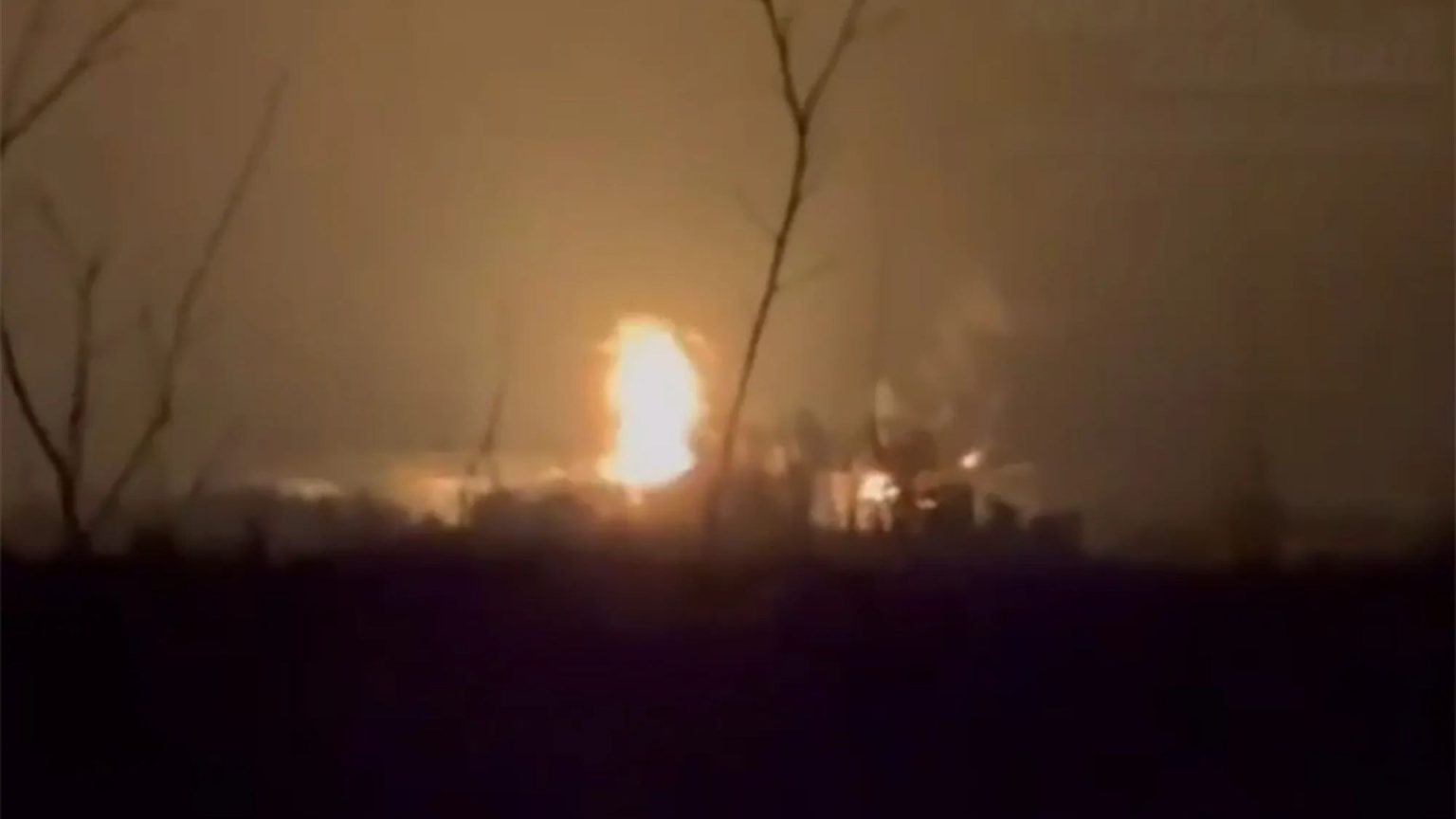Ukraine launched a significant drone assault deep within Russian territory, targeting an oil depot in Liski, Voronezh region, and the Tambov Gunpowder Plant near Kotovsk. The Liski attack involved at least ten drones, igniting a major fire. The Tambov plant, a key supplier of explosives for the Russian military, also experienced explosions and fire despite active air defense measures. Firefighting resources were mobilized from neighboring regions to combat the blaze at the strategically important oil depot. This audacious attack unfolded as British Prime Minister Keir Starmer arrived in Kyiv to solidify a long-term partnership agreement with Ukraine. While the Russian defense ministry claimed to have intercepted three Ukrainian drones, regional governor Alexander Gusev reported a broader attack involving more than ten drones, primarily focused on the Liski oil depot. This latest strike follows a series of successful Ukrainian aerial bombardments against Russian military infrastructure.
This recent wave of Ukrainian drone and missile strikes represents one of the most extensive assaults on Russian territory since the war began. Utilizing a sophisticated strategy, Ukrainian forces first deployed drones to divert Russian air defenses, creating vulnerabilities for subsequent missile strikes. These coordinated attacks targeted multiple locations including Engels, Saratov, Kazan, Bryansk, and Tula, inflicting damage on key infrastructure such as oil storage facilities, refineries, chemical plants, and ammunition depots. The strikes demonstrate Ukraine’s increasing capability to penetrate Russian defenses and project power deep within enemy territory. This demonstrates a growing confidence in Ukrainian military planning and execution, leveraging combined arms tactics to achieve significant operational effects.
The timing of the attack coincided with the arrival of British Prime Minister Keir Starmer in Kyiv, highlighting the unwavering support Ukraine receives from its Western allies. Starmer’s visit underscored the “unbreakable bonds” between the UK and Ukraine, and solidified the UK’s role as a key partner in Ukraine’s reconstruction efforts. The proposed 100-year partnership encompasses a range of collaborative initiatives, from rebuilding Ukraine’s energy infrastructure and developing its mineral resources to enhancing security cooperation in the Baltic, Azov, and Black Seas. This long-term commitment signals a strategic investment in Ukraine’s future and a commitment to its long-term security and prosperity. It also reinforces the message of international solidarity against Russian aggression.
Speculation regarding a potential peace deal between Russia and Ukraine has intensified, with some suggesting that former US President Donald Trump’s return to power could accelerate the process. Trump, who has claimed he could end the war swiftly, is seen by some as a potential catalyst for negotiations. While the exact timing of any peace deal remains uncertain, the possibility of talks around Easter has been mentioned. Any such agreement would likely involve complex negotiations and require significant concessions from both sides. Ukraine has outlined its own conditions for peace, including security guarantees, potentially linked to NATO membership.
Trump’s purported peace plan involves a combination of incentives and pressures. Increased military support would be offered to Ukraine as leverage against Russia’s continued territorial gains and refusal to negotiate. Zelensky would be expected to cede territory already occupied by Russia and relinquish immediate NATO membership aspirations in exchange for this support. Conversely, a lack of cooperation from Zelensky could result in a reduction of US military aid. This approach aims to create a framework for negotiation by applying pressure on both sides, utilizing US support as a bargaining chip.
The effectiveness of this proposed plan hinges on the willingness of both Zelensky and Putin to cooperate. While Putin is reportedly wary of Trump and might be inclined to negotiate, he is expected to demand significant concessions. Zelensky, while potentially open to talks, has consistently emphasized NATO membership as a crucial element of any peace settlement. This divergence in their positions poses a significant challenge to any potential agreement. The feasibility of Trump’s plan rests on his ability to navigate these complexities and find common ground between the conflicting demands of Ukraine and Russia. The future of the conflict, and the prospect of peace, remain uncertain, subject to the interplay of these complex political and strategic factors.


